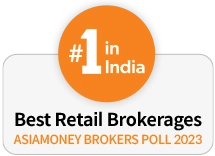Crude oil commodity trading offers a dynamic arena for investors, influenced by geopolitical, economic, and environmental factors. This article offers the essentials of crude oil trading, providing insights into navigating the commodity market and leveraging the fluctuating crude oil prices to your advantage.
Understanding Crude Oil as a Commodity
Crude commodity is raw, unrefined petroleum from beneath the earth's crust. Crude oil forms the primary feedstock fuelling economic growth and transportation globally. Based on density and sulfur proportions, varieties like West Texas Intermediate or Brent Crude become reference pricing benchmarks futures contracts track establishing trade parameters. Thereby, daily dealings critically influence budgets and decisions at scale.
The Basics of Crude Oil Trading
Crude trades through regulated commodity futures exchanges allow institutional investors and independent traders to long or short oil contracts without physical ownership yet harnessing price volatility through leverage.
Therefore, participants speculate on outlook differentials hedging inflation risks or amplifying gains by attempting timely entries and exits, optimising recurring payoffs amid known risk parameters contractually. Equally, futures aid airlines or refineries in cautiously budgeting fuel costs ahead through price locks.
How to Trade in Crude Oil?
While engaging trade in crude oil, succeeding sustainably hinges on dynamic foundations that enable informed navigation of outsized risks.
? Selecting a Trading Platform
Exchanges offering secure, seamless access, real-time charts, and volatility analytics alongside macroeconomic data subscriptions aid both execution and analysis, the dual pillars upholding consistency and compounding gains through oil complexity. Therefore, platform choice merits due attention.
? Understanding Futures Contracts
As results encourage indirect oil exposure without physical custody, comprehending futures construct nuances covering ideal contract liquidity, tenures aligning outlooks, tick sizes, and expiry technicalities, which proves pivotal before commitments.
Click Here to Open Open Commodity Trading Account
? Analysing the Market
By incorporating historical price charts, petroleum stockpile data, OPEC decisions, and geopolitical undercurrents impacting supply-demand interplays in real-time, analytical skills determine success in navigating fluid dynamics, maximising informed gains probabilities while minimising surprise vulnerabilities that crush undisciplined optimists perpetually. So, combine diligence with psychology for results.
Strategies for Crude Oil Trading
? Fundamental Analysis
This strategy involves analysing global economic and political factors to predict future oil prices. Factors such as OPEC policies, production levels, and global demand play significant roles.
? Technical Analysis
Technical analysis focuses on price charts and historical data to identify patterns and trends that can indicate future price movements. Tools like moving averages and relative strength indicators are commonly used.
? Risk Management
Implementing effective risk management strategies, including stop-loss orders and position sizing, is crucial to protect your investments from significant losses.
The Role of the Commodity Market in Crude Oil Trading
The commodity market crude oil trading facilitates by enabling participants to be long or short oil futures contracts without physical ownership, thereby harnessing global price volatility dynamics through leverage for either profitable speculation or budgeting cost stabilisations amid inflation unpredictability.
Thereby, participants target timely entries and exits, riding interim differentials cautiously either way by bridging producers, consumers, and punters transparently, the efficient crude oil price in the commodity market with wider economic stability.
Impact of Global Events on Crude Oil Prices
With crude oil demand and transportation fuelling economic activities globally, geopolitical conflicts, natural supply disruptions, or OPEC decisions can jolt the status quo abruptly, inducing acute price spikes and corrections testing trader resolves short term.
Therefore, keeping abreast of international newsflows and diplomatic developments remains imperative, optimising analysis relevance and attuning execution timing aligned to event risk calls. By balancing data rationality against real-time findings objectively, analytical judgments sharpen probabilistically, rationally extracting opportunities created amidst unfolding uncertainties.
Future Trends in Crude Oil Trading
With renewable energy adoption promising to reshape energy dependency structural dynamics gradually over forthcoming decades as technology improves efficiencies exponentially and costs lower, crude oil demand forecasts warrant prudent recalibrations anticipating global mobility transformations accordingly.
Accordingly, trading mindsets call for evolution, aligning analytical skills to the pivot judiciously, spotting trend reversal signals early optimising portfolio staying power amidst secular transitions underpinning sustainable energy tailwinds compounding alternatively. Though oil retains relevance persistently, progressive traders balance ethical externalities prudently, consistently delivering positive impacts besides portfolio gains.
Analysing Crude Oil Price Movements
With market-moving newsflows often jolting the status quo abruptly, balancing historical precedents against emerging supply and demand inflexions proves pivotal timing entries. Tools like moving averages, Fibonacci retracements, and momentum indicators diagnose exhaustion ahead of turn catalysts revealed through volume surges, enabling position-taking ahead of reactive herd curves. Equally scoping oil commentary feeds adds immunity spotting consensus clues.
Conclusion
Crude oil trading offers a challenging yet rewarding opportunity for investors willing to dig into the complexities of the commodity market. By understanding the market, employing strategic analysis, and staying informed on global events, traders can navigate the volatile waters of crude oil prices. Remember, while the potential for profit is significant, so is the risk of loss. Therefore, continuous learning and prudent risk management should be the cornerstones of your trading approach.




